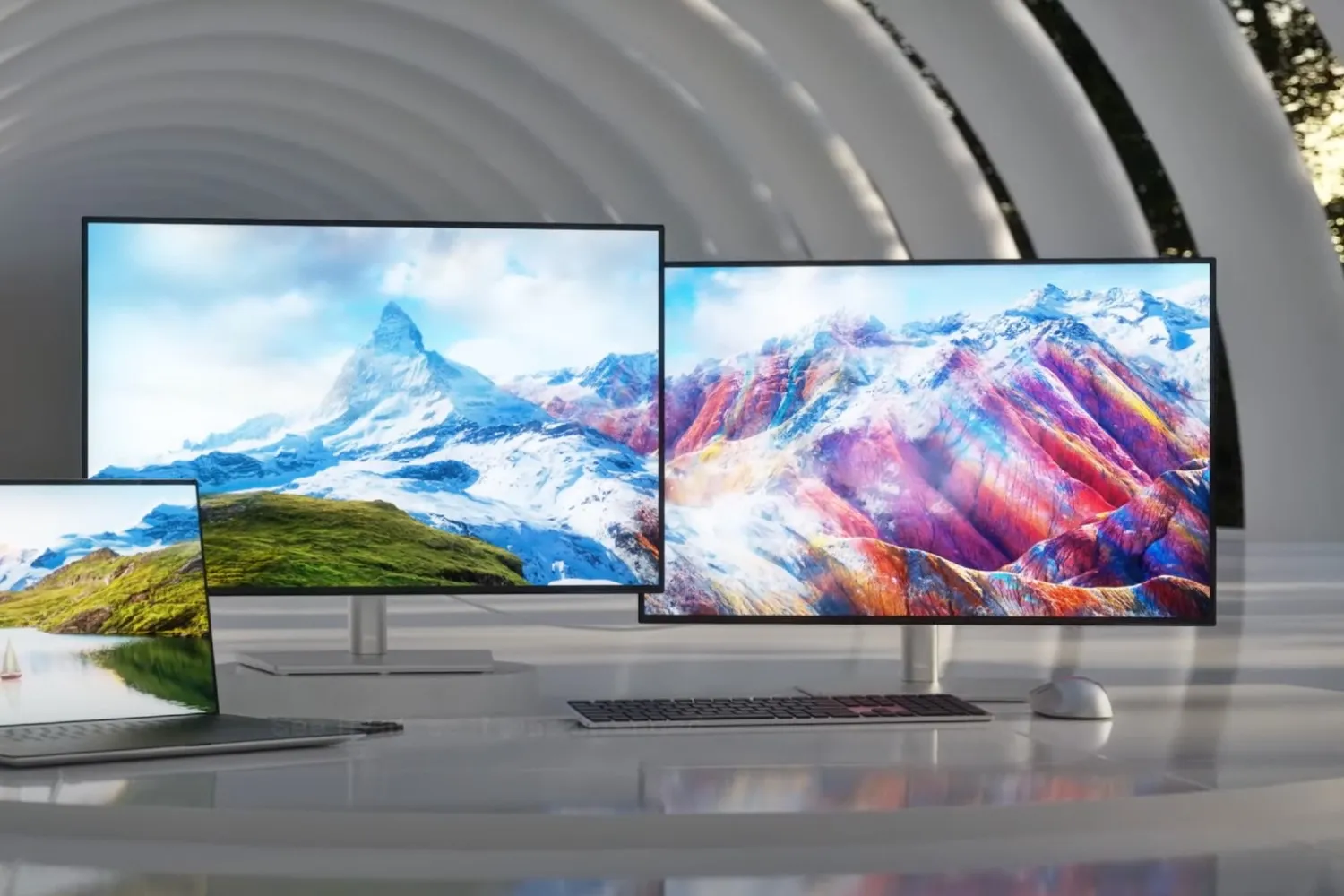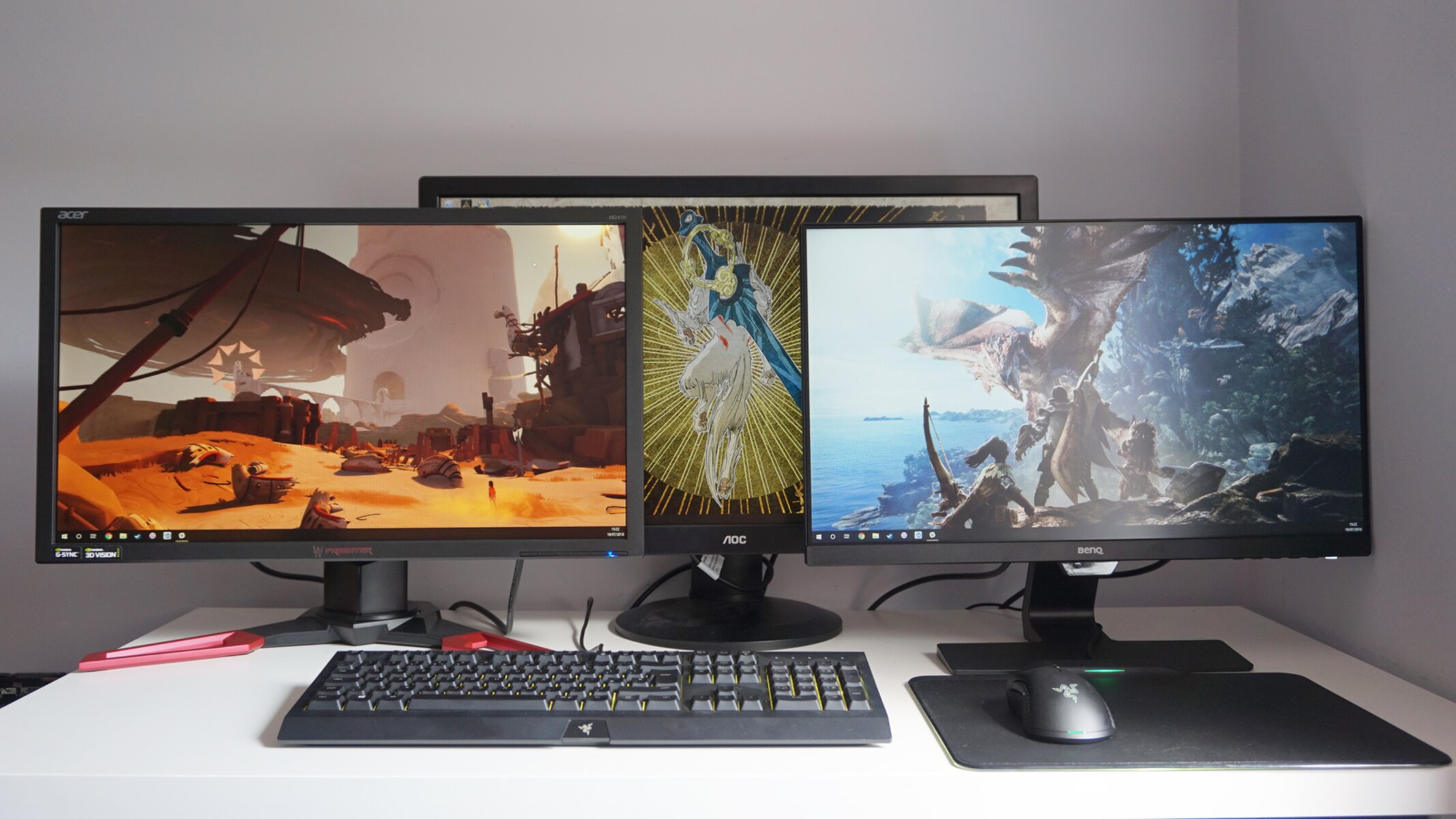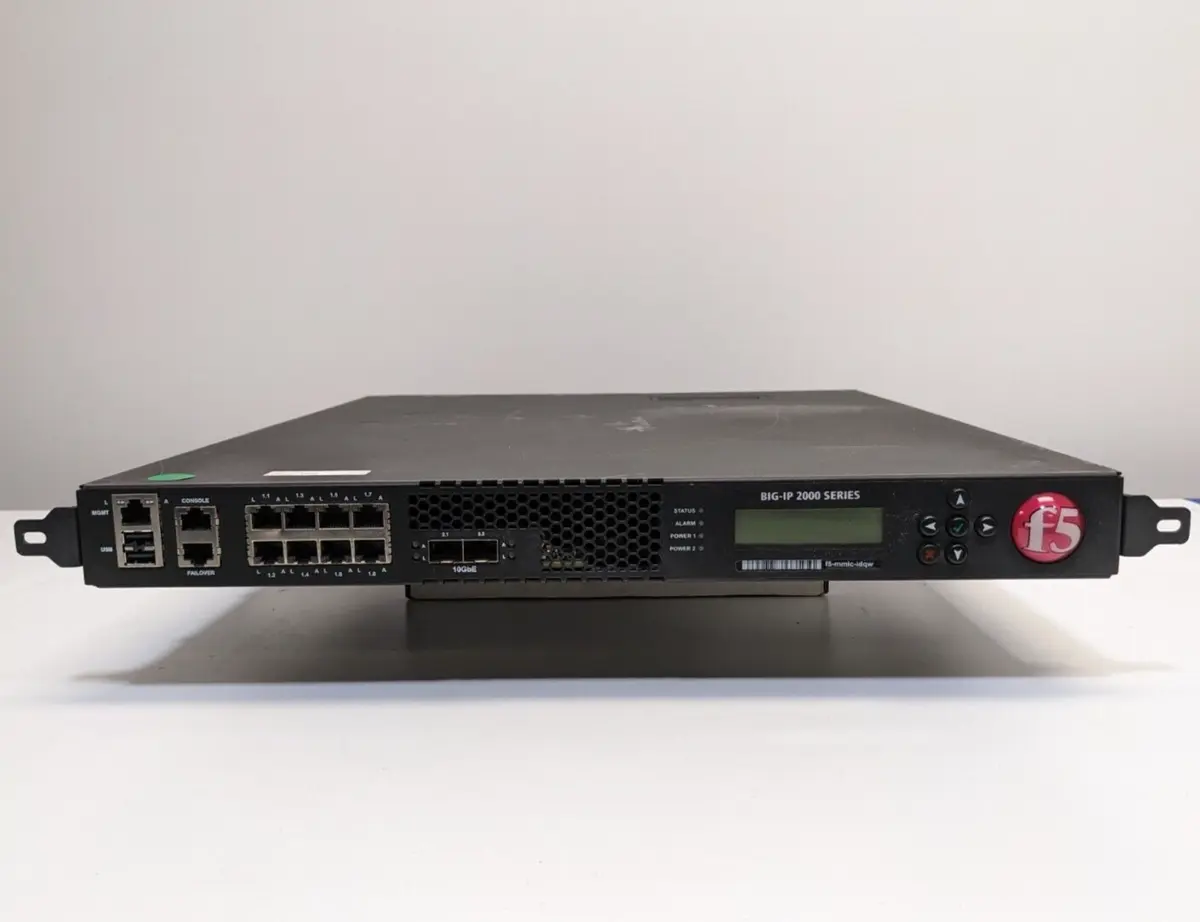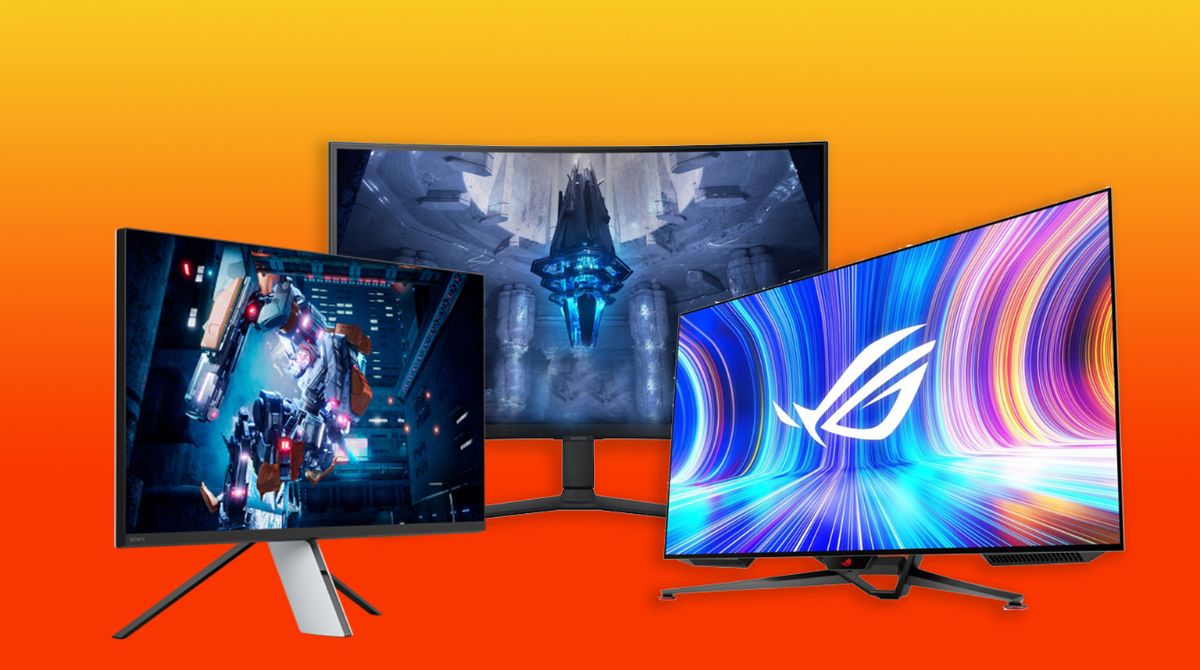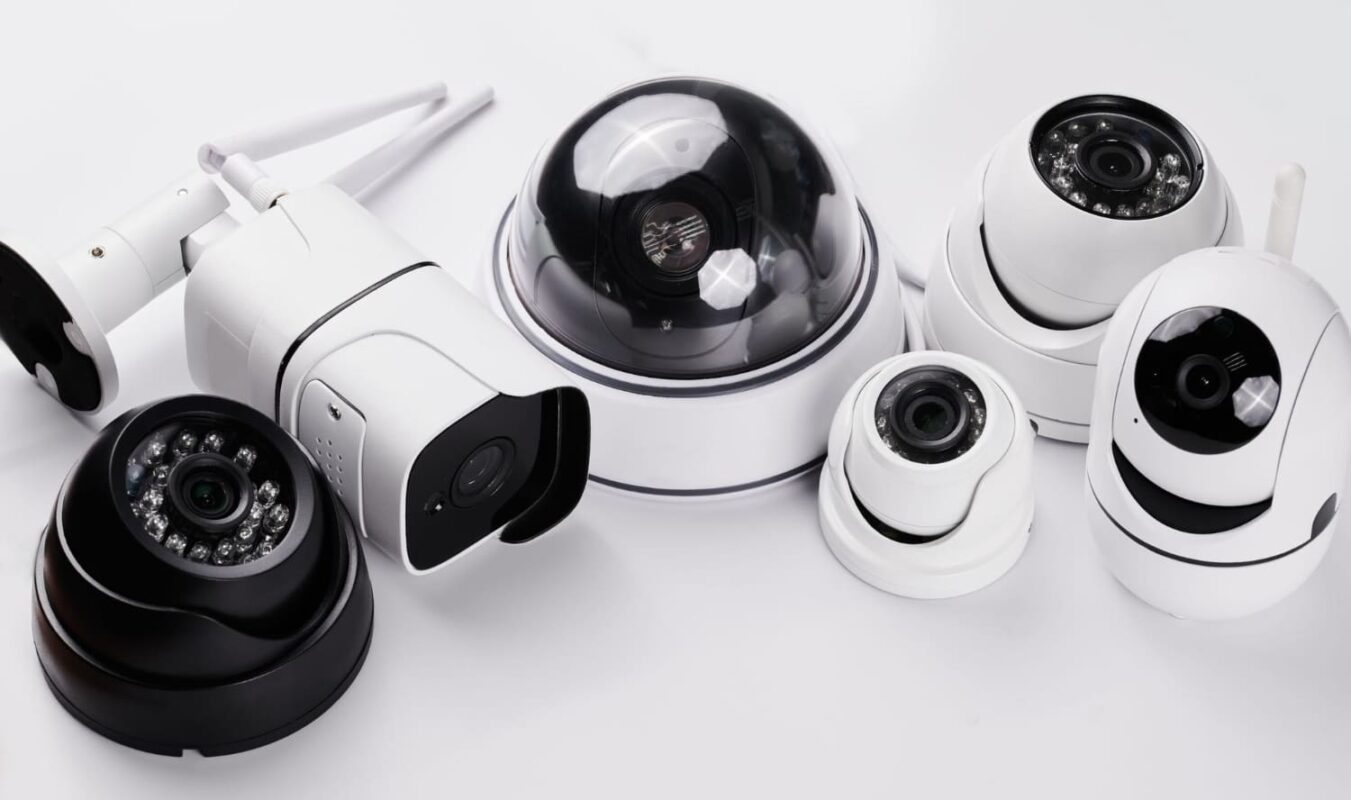The Basics of IPS Monitors
When it comes to choosing a monitor, having a good understanding of the different display technologies available is crucial. One option that stands out is the IPS (In-Plane Switching) monitor. IPS monitors have gained popularity due to their impressive color accuracy, wide viewing angles, and overall visual quality.
IPS monitors are characterized by their ability to maintain consistent colors and brightness levels, regardless of the viewing angle. This is in contrast to other display technologies, such as TN (Twisted Nematic) or VA (Vertical Alignment) panels, which can suffer from color shifting or diminished image quality when viewed from certain angles.
One of the key features of IPS monitors is their superior color reproduction. These monitors are capable of producing a wide range of colors, ensuring vibrant and accurate visuals. This makes IPS monitors well-suited for tasks that require color precision, such as graphic design, photo editing, and video production.
IPS monitors also excel in terms of providing wider viewing angles. This means you can view the screen from almost any position without experiencing color distortion or loss of image quality. It is particularly useful in scenarios where multiple people need to view the same content simultaneously, such as during presentations or group discussions.
In addition to color accuracy and wide viewing angles, IPS monitors generally offer better contrast ratios and more consistent brightness levels compared to other display technologies. They typically have higher pixel densities, resulting in crisper and more detailed images.
When considering an IPS monitor, it is important to take into account factors such as resolution, refresh rate, and response time. Higher resolutions provide sharper images, while faster refresh rates and lower response times contribute to smoother motion and reduced motion blur, respectively.
One thing to note is that IPS monitors tend to have slightly higher price points compared to other display technologies. However, the investment is worth it for those who prioritize color accuracy, wide viewing angles, and overall visual quality.
Overall, IPS monitors are a great choice for individuals who require exceptional color reproduction, wide viewing angles, and consistent image quality. Whether you are a professional graphic designer, photographer, video editor, or simply a user who values a visually appealing viewing experience, an IPS monitor can significantly enhance your work and entertainment activities.
How IPS Monitors Work
Understanding how IPS (In-Plane Switching) monitors work can help you appreciate their superior image quality and performance. Unlike other display technologies, such as TN (Twisted Nematic) or VA (Vertical Alignment), which use different methods to control liquid crystal alignment, IPS monitors utilize a unique approach called “parallel alignment.”
At the core of an IPS panel are liquid crystal cells sandwiched between two glass plates. These liquid crystal cells have horizontal alignment, meaning that the liquid crystals are oriented parallel to the glass plates. When an electrical charge is applied, the liquid crystals twist to allow light to pass through or block it, creating the desired color and image.
What sets IPS panels apart is their use of a two-domain pixel structure. Each pixel in an IPS panel consists of two sub-pixels: one with vertically aligned liquid crystals and another with horizontally aligned liquid crystals. By using a transistor for each sub-pixel, IPS monitors can control the voltage applied to each sub-pixel individually, ensuring precise control over the liquid crystal orientation.
When an electrical charge is applied to the pixels, the liquid crystals in the vertical and horizontal sub-pixels align themselves with their respective electric fields. This parallel alignment allows IPS monitors to maintain consistent colors and brightness levels, regardless of the viewing angle.
Compared to TN panels, which use a different mechanism called “twisting” to control liquid crystal orientation, IPS panels provide better color reproduction and wider viewing angles. TN panels have limited viewing angles and are susceptible to color distortion, making them less suitable for tasks that require accurate color representation.
One downside of IPS monitors is slightly slower response times compared to TN panels. However, advancements in IPS technology have significantly reduced this gap, making IPS monitors a viable option even for fast-paced applications like gaming and multimedia editing.
In summary, IPS monitors achieve their superior image quality by utilizing parallel alignment of liquid crystals. This technology allows for consistent colors, wide viewing angles, and improved color accuracy compared to other display technologies. Although they may have slightly slower response times, the benefits of IPS panels, such as vibrant colors and accurate image reproduction, make them a top choice for professionals and users who seek exceptional visual experiences.
The Advantages of IPS Monitors
IPS (In-Plane Switching) monitors offer several advantages that make them an appealing choice for various applications, from professional work to gaming and multimedia consumption. Here are some key advantages of IPS monitors:
- Color Accuracy: IPS monitors are renowned for their outstanding color reproduction. They can display a wide range of colors with high accuracy, ensuring vibrant and lifelike visuals. This makes IPS monitors ideal for professionals in fields such as graphic design, photography, and video editing, where color precision is crucial.
- Wide Viewing Angles: One of the standout features of IPS monitors is their ability to maintain consistent image quality and color accuracy from various angles. Unlike other display technologies, such as TN panels, IPS monitors minimize color shifts and maintain vibrant visuals even when viewed from extreme angles. This is particularly beneficial in scenarios where multiple users need to view the same content or when giving presentations.
- Superior Image Quality: IPS monitors are designed to deliver exceptional image quality. They offer high resolutions, resulting in sharp and detailed imagery. With better contrast ratios and consistent brightness levels, IPS monitors provide a visually pleasing viewing experience, whether for work or entertainment purposes.
- Reduced Eye Strain: IPS monitors typically feature flicker-free technology and low blue light filters. This helps reduce eye strain, making them comfortable for extended use. By minimizing screen flickering and filtering out harmful blue light, IPS monitors promote a more comfortable and enjoyable viewing experience, especially during long work sessions or gaming sessions.
- Accurate Color Reproduction Accurate color reproduction is critical for professionals in graphic design, photography, and video editing, and IPS monitors excel in this aspect. They offer precise color representation, allowing for better color grading and ensuring that the final output is as intended.
- Fast Response Times: IPS panels have improved over the years, with faster response times that reduce motion blur and ghosting. While IPS monitors may not match the ultra-fast response times of TN panels, they are still suitable for most gaming and multimedia editing needs.
In summary, IPS monitors provide numerous advantages, including exceptional color accuracy, wide viewing angles, superior image quality, reduced eye strain, accurate color reproduction, and improved response times. Whether you are a professional who requires precise color representation or a casual user seeking a visually pleasing viewing experience, IPS monitors are a reliable choice that caters to a wide range of needs.
Understanding Color Accuracy on IPS Monitors
Color accuracy is a critical consideration when it comes to choosing a monitor, especially for professionals who depend on precise color representation. IPS (In-Plane Switching) monitors are known for their exceptional color accuracy, making them a popular choice among photographers, graphic designers, and video editors. Understanding the factors that contribute to color accuracy on IPS monitors is essential for making informed decisions.
One of the primary factors that contribute to color accuracy is the color gamut of the monitor. The color gamut refers to the range of colors that a monitor can display. IPS monitors typically have a wide color gamut, such as Adobe RGB or DCI-P3, which enables them to reproduce a broader spectrum of colors. This is advantageous for professionals who require accurate color representation in their work.
Another contributing factor to color accuracy is the color calibration of the monitor. Calibration ensures that the monitor accurately displays colors according to established industry standards. IPS monitors are often factory-calibrated or come with built-in color calibration tools, allowing users to achieve more precise color reproduction without the need for additional calibration hardware.
Additionally, IPS monitors provide consistent color reproduction across the entire display, thanks to their wide viewing angles. This means that colors remain true and accurate even when viewed from extreme angles, avoiding color distortion or shifting that can occur with other display technologies.
It’s important to note that color accuracy can also be influenced by external factors, such as ambient lighting conditions. Bright or uneven lighting can affect perceived colors and make accurate color judgment challenging. To mitigate this, IPS monitors often come with features like ambient light sensors or hood attachments to help optimize viewing conditions and maintain color accuracy.
Professionals who rely on accurate color representation may benefit from utilizing color management software or hardware. These tools allow users to create custom color profiles, perform precise calibration, and match colors across multiple devices for consistent results.
When selecting an IPS monitor for color-critical work, it’s essential to consider its color accuracy specifications, color gamut coverage, and the availability of built-in calibration options. Expert reviews and user feedback can also provide valuable insights into the color accuracy performance of specific monitor models.
In summary, IPS monitors are renowned for their exceptional color accuracy, thanks to features such as wide color gamut coverage, factory or built-in calibration options, and consistent color reproduction across wide viewing angles. By understanding the factors that contribute to color accuracy on IPS monitors, professionals can make informed decisions and select the right monitor for their specific color-critical needs.
Viewing Angles and IPS Monitors
One of the standout features of IPS (In-Plane Switching) monitors is their ability to maintain consistent image quality and color accuracy across a wide range of viewing angles. Unlike other display technologies, such as TN (Twisted Nematic) or VA (Vertical Alignment) panels, which can suffer from color distortion or diminished image quality when viewed from certain angles, IPS monitors offer excellent viewing angles with minimal color shifts.
IPS panels achieve wide viewing angles through their unique construction. The liquid crystal cells in an IPS panel are aligned horizontally between two glass plates. This horizontal alignment enables light to pass through and maintain consistent color accuracy from different viewing angles.
Compared to TN panels, which are commonly used in budget monitors, IPS monitors offer drastically improved viewing angles. With TN panels, colors and image quality can noticeably degrade when viewed from above, below, or from the sides. This limitation can be particularly problematic in scenarios where multiple people need to view the screen simultaneously, such as during presentations or group discussions.
IPS monitors, on the other hand, greatly reduce these issues. They minimize color shifts and maintain vibrant visuals even when viewed from extreme angles, providing a more immersive and enjoyable viewing experience for users.
The wide viewing angles offered by IPS monitors have practical benefits in various contexts. They are ideal for collaborative work environments where multiple people need to view the same screen. IPS monitors ensure that everyone can comfortably see the content without experiencing significant changes in color or image quality.
Furthermore, wide viewing angles are advantageous for tasks that require accurate and consistent color representation. Professionals in fields such as graphic design, photography, and video editing rely on precise color accuracy to ensure their work appears as intended. IPS monitors allow for accurate color reproduction, regardless of the viewing angle, allowing users to make informed decisions based on accurate color representation.
It’s important to note that while IPS monitors offer superior viewing angles compared to TN and VA panels, there can still be some minor color shifts when viewing from extreme angles. However, these deviations are typically more tolerable and less pronounced compared to other display technologies.
In summary, IPS monitors excel in providing wide viewing angles that maintain consistent image quality and color accuracy. Whether you are working collaboratively or engaging in color-critical tasks, IPS monitors offer an immersive and visually pleasing viewing experience that caters to a wide range of users’ needs.
IPS Monitors vs. Other Display Technologies
When it comes to choosing a monitor, understanding the differences between IPS (In-Plane Switching) monitors and other display technologies is crucial. Let’s compare IPS monitors with two popular alternatives: TN (Twisted Nematic) panels and VA (Vertical Alignment) panels.
One of the key advantages of IPS monitors over TN panels is their superior color accuracy and reproduction. IPS monitors can display a wider range of colors with higher accuracy, making them an excellent choice for professionals who require precise color representation, such as graphic designers, photographers, and video editors. On the other hand, TN panels, commonly found in budget monitors, have limited color gamut and can result in less accurate color reproduction.
Another significant difference between IPS monitors and TN panels is the viewing angles. IPS monitors provide much wider viewing angles, allowing users to view the screen from various positions without experiencing significant color shifts or distortion. In contrast, TN panels have narrow viewing angles, which means that the image quality and colors can degrade when viewed from above, below, or from the sides.
VA panels, on the other hand, fall somewhere in between IPS and TN panels in terms of color accuracy and viewing angles. While VA panels can offer better color reproduction compared to TN panels, they generally fall slightly short of the color accuracy provided by IPS monitors. VA panels also provide wider viewing angles compared to TN panels but still have some limitations when compared to IPS monitors.
Response time is another area where IPS monitors differ from TN panels. Historically, one drawback of IPS monitors was their slower response times, which could lead to motion blur or ghosting in fast-paced content such as gaming or action movies. However, advancements in IPS technology have significantly reduced this gap, and IPS monitors now offer response times comparable to or even better than TN panels, making them a viable option for gaming and multimedia editing.
When considering factors like cost and availability, TN panels often come out as more affordable options compared to IPS monitors. TN panels are commonly found in entry-level or budget-friendly monitors, making them suitable for casual users who prioritize affordability over color accuracy or wide viewing angles.
In summary, IPS monitors offer superior color accuracy, wider viewing angles, and comparable response times compared to TN panels. They excel in tasks that require precise color representation and consistent image quality from various angles. TN panels, on the other hand, are more budget-friendly and can be suitable for casual users who do not require the same level of color accuracy or wide viewing angles. VA panels fall somewhere in between, offering better color reproduction and wider viewing angles compared to TN panels but not reaching the same level of color accuracy and viewing angles as IPS monitors.
Choosing the Right IPS Monitor for Your Needs
With a wide range of IPS (In-Plane Switching) monitors available on the market, selecting the right one for your specific needs can be a daunting task. Consider the following factors to ensure that you find an IPS monitor that meets your requirements.
Screen Size and Resolution: Determine the ideal screen size and resolution for your intended use. A larger screen size provides more immersive visuals, while higher resolutions offer sharper and more detailed images. Consider factors such as your workspace limitations and the viewing distance when choosing the screen size and resolution.
Color Accuracy and Gamut: If color accuracy is critical to your work, opt for an IPS monitor with a wide color gamut, such as Adobe RGB or DCI-P3. Look for monitors that come with factory calibration or built-in calibration tools to ensure accurate and consistent color representation.
Connectivity Options: Consider the connectivity options you require. Ensure the monitor has the necessary ports, such as HDMI, DisplayPort, or USB-C, to connect to your devices. Additional USB ports may also be beneficial for connecting peripherals or charging devices.
Refresh Rate and Response Time: If you plan to use your IPS monitor for gaming or fast-paced multimedia editing, prioritize monitors with higher refresh rates and faster response times. A higher refresh rate ensures smoother motion, while a faster response time reduces motion blur and ghosting.
Ergonomics and Adjustability: Evaluate the monitor’s ergonomics and adjustability features. Look for monitors that offer tilt, swivel, and height adjustment options to customize the viewing experience for optimal comfort and productivity.
Additional Features: Consider any additional features that may be important to you. This could include built-in speakers, Blue Light filters, flicker-free technology, or ambient light sensors. These features can contribute to a more comfortable and enjoyable viewing experience.
Budget: Determine your budget range. IPS monitors can vary significantly in price, so defining your budget ahead of time will help narrow down your options. Consider the features that are most important to you and find a balance between performance and affordability.
Research and Reviews: Before making a final decision, do thorough research and read reviews from reputable sources. User reviews can provide valuable insights into the real-world performance and long-term reliability of the monitor you are considering.
By considering factors such as screen size, resolution, color accuracy, connectivity options, refresh rate, ergonomics, and your budget range, you can find an IPS monitor that aligns with your specific needs. Do your due diligence and take advantage of the wealth of information available to make an informed decision.
IPS Monitors for Gaming
When it comes to gaming, choosing the right monitor is crucial to enhance your gaming experience. While IPS (In-Plane Switching) monitors were once known for slower response times compared to other display technologies, advancements in IPS technology have made them a viable choice for gamers who prioritize color accuracy and wide viewing angles. Here’s why IPS monitors can be a fantastic option for gaming:
Color Accuracy: IPS monitors are renowned for their exceptional color accuracy, making games look vibrant and lifelike. They offer wide color gamut coverage, ensuring that every detail in the game is displayed with precise color representation. This is particularly beneficial for games that feature rich and immersive visuals.
Wide Viewing Angles: One of the standout features of IPS monitors is their ability to maintain consistent image quality and color accuracy even when viewed from extreme angles. This means that you can enjoy multiplayer games or watch others play without significantly compromising the visuals. Wide viewing angles also provide more flexibility in choosing your gaming setup and seating position.
Better Image Quality: IPS monitors offer excellent image quality, thanks to their high resolutions and improved contrast ratios. The higher pixel density results in sharper and more detailed visuals, allowing you to see finer details in games. IPS panels also tend to have better black levels, enhancing contrast and making dark scenes in games look more immersive.
Reduced Eye Strain: IPS monitors often feature flicker-free technology and low blue light filters to reduce eye strain during long gaming sessions. These features can help alleviate eye fatigue and provide a more comfortable experience, especially for those who spend extended periods immersed in gaming sessions.
Improved Response Times: While IPS monitors typically had slower response times in the past, modern IPS panels have significantly reduced this gap. Many IPS monitors now offer fast response times, ensuring smoother motion and reducing motion blur. This makes them suitable for fast-paced gaming, including first-person shooters and racing games.
Adaptive Sync Technology: Some IPS monitors come with adaptive sync technologies like AMD FreeSync or NVIDIA G-Sync. These technologies synchronize the monitor’s refresh rate with the graphics card’s output, reducing screen tearing and providing a smoother gaming experience. This can be particularly beneficial for gamers who want a tear-free and stutter-free gaming experience.
However, it’s important to note that IPS monitors might not deliver the same level of response times as TN panels. Gamers who prioritize ultra-fast response times, especially in competitive gaming, may still prefer TN panels. However, for gamers who value color accuracy, wide viewing angles, and overall visual quality, IPS monitors are an excellent choice.
In summary, IPS monitors offer outstanding color accuracy, wide viewing angles, improved image quality, reduced eye strain, and improved response times which make them suitable for both casual and dedicated gamers. With the advancements in IPS technology, gamers can now enjoy a visually immersive and accurate gaming experience with the benefits IPS monitors bring to the table.
IPS Monitors for Graphic Design and Photography
When it comes to graphic design and photography, having an accurate and reliable monitor is essential to ensure precise color representation and detail. IPS (In-Plane Switching) monitors have long been popular among professionals in these fields due to their exceptional color accuracy and wide viewing angles. Here’s why IPS monitors are a stellar choice for graphic design and photography:
Color Accuracy: IPS monitors are renowned for their outstanding color accuracy, making them a top choice for professionals who require precise color representation. They offer wide color gamut coverage, ensuring that every hue and shade is faithfully reproduced on the screen. This is crucial for graphic designers and photographers who rely on accurate color representation for their work.
Wide Viewing Angles: One of the key advantages of IPS monitors is their ability to maintain consistent image quality and color accuracy from various viewing angles. This means that you can view your work with confidence from different positions without experiencing color shifts or image distortion. It is particularly beneficial in collaborative work environments and when sharing your work with clients or colleagues.
High Resolution and Detail: IPS monitors often offer high resolutions, such as 4K or QHD, which provide sharp details and pixel-level accuracy. This enables graphic designers and photographers to see their work with incredible precision, spot intricate details, and make fine adjustments when editing images or creating designs.
Accurate Contrast and Brightness: IPS monitors typically have better contrast ratios and consistent brightness levels compared to other display technologies. This allows graphic designers and photographers to accurately judge the contrast in their designs or the tonal range in their photographs. It ensures that the final output represents their artistic vision faithfully.
Consistent Color across Viewing Angles: IPS monitors excel in maintaining color consistency across the entire display, regardless of viewing angles. This means that the colors you see on the screen will remain true and accurate, even if you are not directly in front of the monitor. This ensures that your designs and photographs look the same to others as they do to you.
Factory Calibration and Color Calibration Tools: Many IPS monitors come with factory calibration, which ensures accurate color out of the box. Additionally, some monitors offer built-in color calibration tools or support external hardware calibration, allowing professionals to achieve even greater color accuracy and calibration control.
For graphic designers and photographers, investing in a high-quality IPS monitor is essential to ensure accurate color representation, precise details, and a reliable visual experience. IPS monitors provide the color accuracy, wide viewing angles, and consistent image quality needed to create stunning designs and showcase photographs with confidence.
IPS Monitors for Video and Multimedia Editing
When it comes to video and multimedia editing, having a reliable monitor that accurately displays colors and details is crucial. IPS (In-Plane Switching) monitors have long been favored by professionals in the field due to their exceptional color accuracy, wide viewing angles, and overall visual quality. Here’s why IPS monitors are an excellent choice for video and multimedia editing:
Color Accuracy and Reproduction: IPS monitors are renowned for their outstanding color accuracy, making them ideal for video and multimedia editing. They offer wide color gamut coverage, ensuring that the colors in your footage or multimedia projects are displayed accurately and faithfully. This is crucial for maintaining consistency and ensuring that your final output matches your creative vision.
Wide Viewing Angles: The wide viewing angles of IPS monitors are advantageous in video editing and multimedia work. Whether you’re collaborating with others or adjusting your edits from different angles, IPS monitors enable you to maintain accurate colors and image quality, regardless of your viewing position. This ensures that your work looks consistent and accurate to all viewers.
High Resolution and Detail: IPS monitors often offer high resolutions, such as 4K or QHD, which provide exceptional detail and pixel-level accuracy. This is particularly important for video and multimedia editing, as it allows you to see fine details, analyze sharpness and clarity, and make precise adjustments to your footage or multimedia projects.
Accurate Contrast and Luminance: IPS monitors typically have excellent contrast ratios and consistent luminance levels, allowing you to accurately judge the contrast and brightness in your videos and multimedia projects. This ensures that the final output maintains a balanced and visually pleasing appearance across different devices and viewing environments.
Consistent Color across Multiple Displays: IPS monitors are known for their ability to maintain consistent color representation across the entire display. This is particularly beneficial when working with multiple monitors or when sharing your work across different devices. IPS monitors ensure that your colors remain consistent and accurate, preserving the integrity of your video editing and multimedia projects.
Improved Response Times: IPS monitors have made significant strides in reducing their response times, making them suitable for video editing and multimedia work. While they may not match the ultra-fast response times of TN panels, the improved response times of IPS monitors help reduce motion blur and provide a smoother editing experience when working with fast-paced multimedia content.
Calibration Control: Many IPS monitors offer extensive calibration options, allowing you to fine-tune color accuracy to your specific requirements. Some monitors have built-in calibration tools, while others support external hardware calibration devices. This level of calibration control ensures that your colors are accurate and consistent across different projects and platforms.
In summary, IPS monitors are an excellent choice for video and multimedia editing due to their exceptional color accuracy, wide viewing angles, high-resolution displays, accurate contrast and luminance, consistent color representation, improved response times, and calibration capabilities. Investing in a high-quality IPS monitor will enhance your editing workflow and ensure that your final video and multimedia projects are visually stunning and accurate to your intended vision.
IPS Monitors for Business and Productivity
When it comes to business and productivity, having a reliable and efficient monitor is crucial for enhancing workflow and maximizing productivity. IPS (In-Plane Switching) monitors offer several features that make them an ideal choice for business professionals and individuals seeking enhanced productivity. Here’s why IPS monitors excel in business and productivity settings:
Wide Viewing Angles: IPS monitors provide wide viewing angles, ensuring that the screen content remains clear and accurate when viewed from different positions. This is beneficial for collaboration, as it allows multiple people to view the screen simultaneously and participate in group discussions more effectively. It is also helpful in situations where you may need to show content to clients or colleagues.
Color Accuracy and Color Reproduction: IPS monitors are known for their exceptional color accuracy and color reproduction capabilities. This is particularly beneficial for business professionals who work with visuals, such as designers, marketers, and content creators. Accurate color representation ensures that visual content, such as graphics, presentations, and marketing materials, are displayed accurately and consistently, maintaining brand integrity.
High Resolution and Display Quality: IPS monitors often offer high resolutions, providing sharp and detailed text and images. This is advantageous for tasks that require fine details, such as data analysis, editing documents, and working with spreadsheets. The improved display quality of IPS monitors contributes to reduced eye strain and improved readability during long working hours.
Ergonomics and Adjustability: Many IPS monitors come with ergonomic features and adjustable stands, allowing users to customize the monitor’s height, tilt, and rotation to achieve the most comfortable viewing position. The ability to adjust and optimize the monitor setup promotes better posture, reducing the risk of strain and fatigue during prolonged work sessions.
Reduced Eye Strain: IPS monitors often feature technologies like flicker-free displays and low blue light filters, which reduce eye strain. These features are particularly beneficial for business professionals who spend extended periods of time in front of their screens, reducing fatigue and enhancing overall comfort during long working hours.
Multiple Connectivity Options: IPS monitors typically offer a variety of connectivity options, such as HDMI, DisplayPort, and USB ports, allowing seamless connectivity to multiple devices. This is helpful for business professionals who need to connect laptops, desktops, tablets, or other peripherals to their monitor for efficient multitasking and increased productivity.
Multiple Monitor Setups: IPS monitors are well-suited for multi-monitor setups, allowing users to expand their screen real estate and improve multitasking capabilities. With consistent color reproduction across IPS monitors, professionals can work seamlessly across different applications, compare information side by side, and easily manage multiple tasks simultaneously.
Whether it’s collaborating with colleagues, working with visuals, sifting through data, or managing multiple tasks, IPS monitors provide the color accuracy, wide viewing angles, high resolution, ergonomic features, reduced eye strain, connectivity options, and flexibility needed to enhance business productivity. Investing in a high-quality IPS monitor can significantly improve work performance, efficiency, and overall satisfaction in business and productivity-driven environments.







